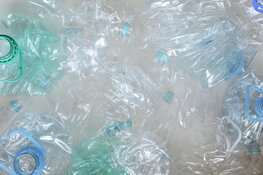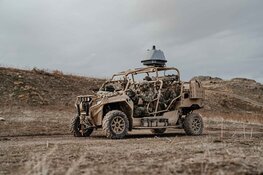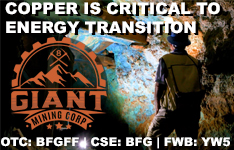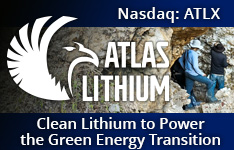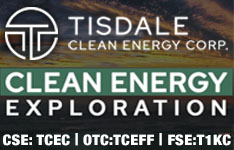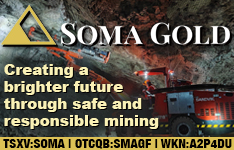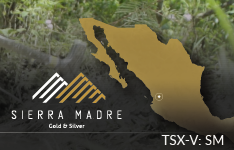The demand in the U.S. for all types of unmanned aerial vehicles (UAVs), or drones, is growing, and this is good news for domestic manufacturers in the industry.
North America dominates the global drone market, according to Skyquest, because of its high adoption rate of drone technology and leading drone manufacturers. Of the continent's countries, the U.S. is the largest market, "driven by the increasing demand for drone applications in the military, defense and commercial industries."
According to Statista, the U.S. "remains at the forefront of drone technology, with a robust market fueled by innovation and a diverse range of applications."
Player in Loitering Munitions Category
Propelled by use in wars around the world, a newer category of UAVs, suicide or kamikaze drones, has materialized and is gaining momentum in the States. These weapons can hover over a target until directed to fly into it, then it hurtles into the target and explodes on impact.
"The emergence of global conflict has brought new players into the loitering munitions market, driving increases in demand and manufacturing. One is Russia," reported the authors of a February Defense and Security Monitor article. "The U.S. is likewise seeking to keep up with the trend."
A series of activity related to this type of weapon by the U.S. over the past two years continues to bear this out.
Its Department of State approved, in June, a new sale of two types of suicide drones totaling $360 million ($360M) to Taiwan, the U.S. Defense Security Cooperation Agency said in a news release. Included in the sale were 291 Altius 600M-V drones with warheads and 720 Switchblade drones, and related equipment. Taiwan is working to bolster its weapons cache without having to rely on China, even for drone parts, reported The Wall Street Journal.
With Iran becoming close to surpassing Russia as the No. 2 arms exporter in the world, the U.S. in the No. 1 spot, may look to accelerate sales of loitering munitions and other weapons to its allies, according to a February Atlantic Council blog post.
In May the U.S. Department of Defense secured about $500M to carry out the first tranche of the $1 billion ($1B) minimum it is seeking to fund its Replicator initiative started last August. With the program, the Pentagon aims to deliver, by August 2025, all-domain autonomous systems (ADA2) to warfighters "at a scale of multiple thousands, across multiple warfighting domains," reported the Defense Innovation Unit.
To equip its military branches with loitering munitions, last July the Pentagon announced Project LASSO to get these specific weapons to U.S. Army infantry units, noted the Defense and Security Monitor article. Similarly, The U.S. Marine Corps launched programs to get loitering weapons to squads in 2027.
In 2022, the U.S. committed to first providing 700-plus Switchblade units and later in the year, Phoenix Ghost loitering munitions to Ukraine.
Also, statistics indicate continued growth of the global loitering munitions market through at least 2032, at which time it is predicted to reach $4.38B in value, according to Allied Market Research. This compares to the value in 2022 of $1.55B and reflects a compound annual growth rate (CAGR) of 10.94%.
Growth Ahead For Other Types, Too
The market for other drones used in defense also is expanding. It is forecasted to reach $5.6B in value by year-end 2032 from $585.8M in 2023, according to Zion Market Research. The CAGR during this period is 28.4%.
"The principal factors propelling the expansion of the worldwide drone defense system market are the requirements for identification systems to detect unregulated airborne commercial drones and countermeasure systems to identify counterdrones," Zion noted.
The markets for drones used for business and for fun are also growing rapidly, according to Fact.MR. U.S. Federal Aviation Administration stats show that of the total drones registered in the States as of May 31, 2024, 392,468 were recreational and 383,302, commercial. The growth in recreational drones has been "driven by advancements in technology and changing consumer preferences," according to Statista. Growth in commercial drones is being propelled by their use in agriculture, surveillance and construction.
Fact.MR noted that drones sales in the U.S. are projected to grow at a 16.9% CAGR to $31.3B by year-end 2034 from $6.6B in 2024.
With drone demand in all types of applications continuing to rise in the States, these two companies could benefit:
Red Cat Holdings Inc. (RCAT:NASDAQ)
Headquartered in Puerto Rico and with a manufacturing facility in Salt Lake City, Utah, Red Cat Holdings develops and manufactures robotic hardware and software for use in aerial military and other operations. The company has all the necessary certifications for supplying its products to armed forces and other governmental agencies and has been awarded multiple military contracts to date.
Red Cat's lead product is the Teal, a small unmanned aircraft system (sUAS) originally designed to "Dominate the Night" with its ultra high-resolution thermal imaging, the company said, but has since been enhanced with additional capabilities.
"The product is portable by rucksack and can give soldiers in the field situational awareness in the form of intelligence, surveillance and reconnaissance (ISR) as well as provide offensive capabilities in the form of loitering munitions delivery systems," reported Ladenburg Thalmann Analyst Glenn Mattson in a June 14 research report.
The company said these drones are an alternative to the conventional ISR/strike systems on the market, which are costly and cannot be retrieved.
Mattson initiated coverage on Red Cat in mid-June with a Buy rating and a price target implying a 285% return for investors.
As for ownership of Red Cat, nine strategic entities own 28.98% or 21.53 million (21.53M) shares, according to Reuters. Chief Executive Officer Jeffrey Thompson holds 16.5% or 12.25M shares (he is the top investor), Gregory French has 6.48% or 4.82M shares and Unusual Machines Inc. CEO Allan Evans owns 1.81% or 1.35M shares.
A total of 39 institutional investors holds 20.27% or 15.06M shares. The Top 3 are AWM Investment Co. Inc. with 6.73% or 5M shares, AIGH Capital Management LLC with 5.05% or 3.75M shares and The Vanguard Group Inc. with 1.75% or 1.3M shares.
Retail investors own the remaining 50.75%.
Regarding share structure, Red Cat has 74.28M outstanding shares and 48.1M free float traded shares.
The company's market cap is $79.48M. Its 52-week trading range is $0.525−$1.65.
Unusual Machines Inc. (UMAC:NYSE)
Based in Florida, Unusual Machines builds and sells drone components. After going public in February it acquired two of Red Cat Holdings' subsidiaries, Rotor Riot, a source of recreational and hobbyist drones, and Fat Shark, a brand of first person view (FPV) goggles.
"[The company it is already an established player in the consumer drone space with its e-commerce platform "Rotor Riot" and generates $5M revenue a year with 20–30% year-on-year growth that is expected to continue," Technical Analyst Clive Maund wrote in a June 20 report.
As a partner of Red Cat, Unusual Machines will provide the first drone and components for Red Cat's new FANG line of FPV systems.
Potential catalysts for UMAC include the upcoming season of governmental contract buying between the ends of July and September, highlighted Maund. Also, the company could benefit from an acceleration of orders in anticipation of the American Security Drone Act taking effect in January 2025 and from the U.S. Countering CCP (Chinese Communist Party) Drones Act.
Maund rated the Universal Machines' stock immediate Strong Buy.
In terms of ownership, 12 strategic entities own 63.8%, or 5.95M shares, of the company, according to Reuters. The Top 3 are Red Cat Holdings Inc. with 45.54% or 4.25M shares, Gordon Holmes with 3.88% or 0.36M shares and Unusual Machines CEO Jeffrey Thompson with 3.79% or 0.35M shares.
One institution, Citadel Advisors LLC, owns 0.18% or 0.02M shares of Unusual Machines.
Retail investors hold the remaining 36.02%.
As for share structure, the company has 9.33M outstanding shares and 3.38M free float traded shares.
Its market cap is $12.88M. Over the past 52 weeks, its stock has traded between $0.98 and $5.54 per share.
| Want to be the first to know about interesting Technology investment ideas? Sign up to receive the FREE Streetwise Reports' newsletter. | Subscribe |


